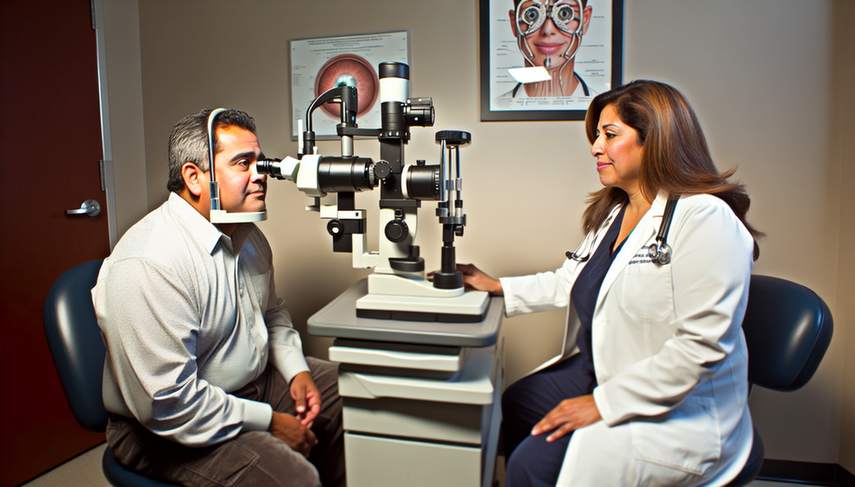Cataract Diagnosis: Biomicroscopic Examination and Refraction for Blurred Vision

The cataract diagnosis is an essential process in ophthalmology, as cataracts are one of the leading causes of lens opacification and vision loss in adults. Accurate evaluation of this condition is crucial for determining the appropriate timing for surgical intervention and improving the patient's quality of life. In this context, the biomicroscopic examination with a slit lamp and the measurement of refraction are fundamental tools for the diagnosis and management of cataracts.
The use of the slit lamp allows for detailed visualization of ocular structures, facilitating the identification of lens opacification. This examination is particularly useful for classifying cataracts based on their anatomical location, such as nuclear, posterior subcapsular, and cortical cataracts. Accurate classification is essential for planning surgical treatment and anticipating potential complications [1]. Additionally, the slit lamp is an indispensable tool for ruling out other ocular pathologies that may coexist with cataracts, such as glaucoma or uveitis [2].
Visual acuity is another critical component in cataract diagnosis. Blurred vision is the most common symptom associated with cataracts, and its evaluation helps determine the functional impact of lens opacification on the patient's daily life. The measurement of visual acuity, along with refraction, provides valuable information regarding the need for surgical intervention and the postoperative visual prognosis [3]. It is important to consider that visual acuity can be affected by other factors, such as the presence of retinal diseases or posterior capsule opacification [4].
In conclusion, the diagnosis of cataracts through the use of the slit lamp and the evaluation of visual acuity is a comprehensive process that allows ophthalmologists to effectively identify and classify cataracts. These tools not only facilitate surgical planning but also help anticipate and manage potential complications. The combination of a detailed biomicroscopic examination and precise vision assessment is essential for optimizing visual outcomes and improving the quality of life for patients with cataracts.
Referencias
- [1] Signs, symptoms, and clinical forms of cataract in adults
- [2] Chronic Uveitis in Children
- [3] Factors impacting cumulative dissipated energy levels and postoperative visual acuity outcome in cataract surgery
- [4] Surgical management of lifebuoy cataract
Created 6/1/2025
